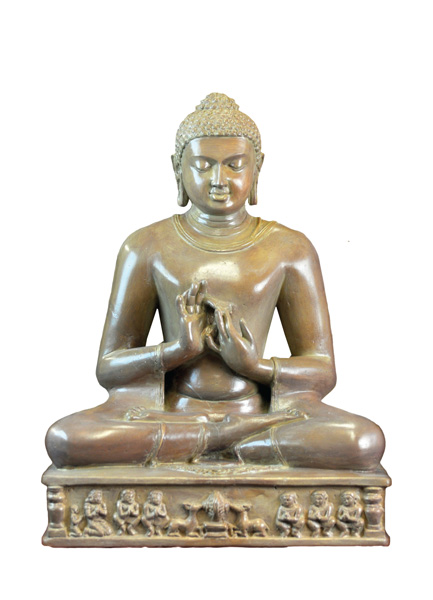Uposatha Day, First Quarter Moon, Sept. 9, 2012
What do we do with this “Rebirth Thing”? Commonly, perhaps typically, Western Buddhists have trouble with the this aspect of Buddhism and reject the whole notion out of hand as unscientific, premodern balderdash. This might be said of much in the Buddha’s discourses, such as many factually inaccurate geographical claims. However rebirth is different because it was clearly a systemic part of the Buddha’s thought, eveh to the extend that he could proclaim the final goal of the Path to be escape from the beginningless round of rebirths. Moreover while no one as far as I know claims that the truth of the Buddha’s geographical understanding makes any difference one way or the other with repect to Buddhist life or practice, a large number of emminent Western practitioners — particularly many monastics with strong backgrounds in science, I notice — come around to endorsing the “Rebirth Thing” most emphatically.
My own feeling is that rebirth cannot be dismissed without losing something vital in the Buddha’s thought.What is vital yet sacrificed in dismissing rebirth out of hand is our responsibility to the future, the sense that that our practice in this life brings great ongoing benefit that outlives us. Without this this practice cannot be something bigger than this fathom long body and few decades of life; while we can dedicate our practice to making this one life more comfortable, the basis for dedicating our lives to practice is absent. As Bhikkhu Bodhi fears, Buddhism collapses into a kind of psychotherapy. Notice that this is an argument for the need for rebirth, not for its actual veracity. However I believe there are a range of modern ways of interpreting rebirth that are rarely considered that differ from the literal ancient account of a linear process that follows directly from a single death to a single birth. I’ve discussed this in my essay From Thought to Destiny.
Here at the Sitagu monastery in Austin, TX we have moved our books into our new library building. They only sparsely occupy the many shelves available to them, but that is a good thing, an open-ended opportunity for expansion. I with the aid of volunteers have been cataloging our books, using the Library of Congress system, for many months, accepting many donations of books and having books purchased to begin to fill the many gaps in our collection. One of the things I’ve been eager to read more about is how “the Rebirth Thing” might actually, contrary to almost everyone’s wildest expectations, be supported by science. Accordingly I’m glad that we now offer some books on this topic.
A number of these books are based on the pioneering research begun by Ian Stevenson at the University of Virgina which over many decades has given us some astonishing case studies of early childhood memories that seem to defy any explanation other than personal experience of the verifiable details of previous lives. I’ll be darned if I can find anything unsound in his methods. Some of the books in question are:
Ian Stevenson, Children Who Remember Previous Lives.
Jim Tucker, Life Before Life.
Ian Stevenson, Twenty Cases Suggestive of Reincarnation
In spite of such evidence, “the Rebirth Thing” is generally dismissed out of hand in scientific circles because getting from an old to a new body implies a degree of independence of mind from the physical universe. It is interesting that the pretheoretical assumption underlying this dismissal is being increasingly challenged within science, even within physics. I’ve begun reading a rather thick book that we have acquired from the perspective of cognitive science that arrays arguments against the assumption of the primacy of matter over mind (of course in Buddhism mind has always been primary):
Edward Kelly, et al., Irreducible Mind.

Leave a Reply